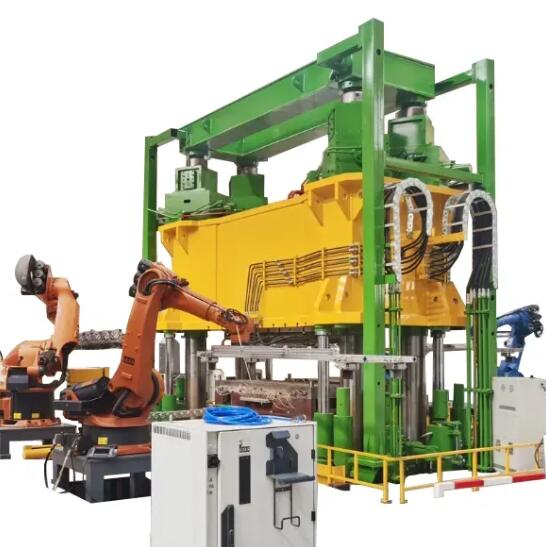Cutting-Edge Technology Enhancements in Hydraulic Presses for Next-Gen SMC Forming
2024-06-25
In the realm of composite material manufacturing, Sheet Molding Compound (SMC) forming has emerged as a crucial process for creating high-strength, lightweight parts. Central to this process are hydraulic presses, which have undergone significant technological advancements to meet the evolving demands of precision, efficiency, and reliability. This blog delves into the latest technological integrations that are propelling hydraulic presses into a new era of performance and dependability for SMC forming.
Advanced Control Systems for Unmatched Precision
1. Digital Control Systems
Modern hydraulic presses are equipped with digital control systems that allow for exact regulation of pressure, temperature, and timing. These systems ensure consistent application of force, resulting in high-precision molds. The digital interfaces provide operators with real-time data and intuitive controls, enhancing the accuracy of the molding process.
2. Feedback Loops and Sensors
Sophisticated sensors and feedback loops monitor the press operations continuously. These sensors track variables such as pressure, temperature, and mold alignment, making real-time adjustments to maintain optimal conditions. This level of control minimizes variations and defects, ensuring each molded component meets stringent quality standards.
Automation for Enhanced Efficiency
3. Robotic Integration
The integration of robotic systems has revolutionized the efficiency of hydraulic presses. Robots handle material loading, unloading, and transfer processes, significantly reducing cycle times and minimizing human error. This automation leads to a streamlined production line capable of high throughput with consistent quality.
4. Programmable Logic Controllers (PLCs)
PLCs offer advanced automation capabilities, allowing for pre-programmed sequences that optimize the molding process. These controllers manage complex operations such as multi-step molding cycles, ensuring precise timing and coordination between different stages of the process.
Energy Efficiency Innovations
5. Variable Frequency Drives (VFDs)
VFDs control the motor speed and torque in hydraulic presses, optimizing energy use during different phases of the molding cycle. By adjusting the motor's performance to match the workload, VFDs reduce energy consumption and operational costs, making the presses more sustainable and cost-effective.
6. Energy Recovery Systems
Modern presses incorporate energy recovery systems that capture and reuse energy generated during the press's operation. This technology reduces the overall energy demand, contributing to lower electricity usage and a smaller carbon footprint.
Conclusion
The integration of advanced technologies in hydraulic presses has transformed the SMC forming process, enhancing both performance and reliability. Digital control systems, automation, energy efficiency innovations, improved clamping mechanisms, and predictive maintenance are driving the next generation of hydraulic presses. These advancements not only improve the quality and consistency of molded components but also boost productivity and sustainability in the manufacturing process.
As the industry continues to innovate, the role of these cutting-edge technologies will be pivotal in meeting the increasing demands for high-quality, cost-effective, and environmentally friendly manufacturing solutions. The future of SMC forming is bright, with hydraulic presses leading the way through technological excellence.



